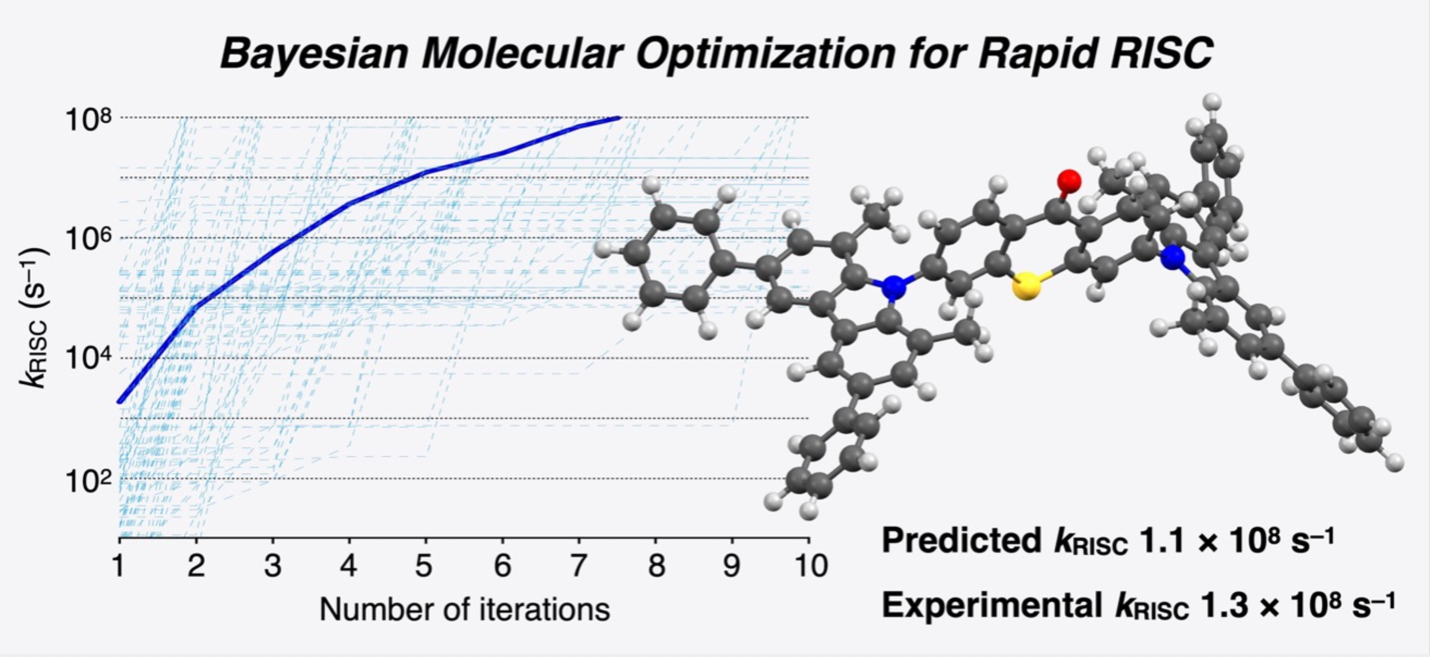Achieving an internal quantum efficiency greater than 25% in OLEDs is inherently challenging due to the 1:3 ratio of singlet to triplet excitons from electron–hole recombination. The radiative decay of triplet excitons is spin forbidden, leading to sluggish photon emission—if any. This issue can be addressed with reverse intersystem crossing (RISC) in which ambient thermal energy converts triplet excitons into singlet excitons resulting in thermally activated delayed fluorescence (TADF), allowing OLEDs to achieve higher internal quantum efficiencies.
Rather than identifying TADF materials through time-intensive experimentation, high-throughput virtual screening can be done with quantum chemical calculations and machine learning. A team of researchers from Hokkaido University ICReDD and Osaka University has developed a efficient virtual screening medthod using Bayesian optimization for the elucidation of organic molecules with high RISC rate constants (kRISC) for TADF.
Bayesian optimization operates with limited datasets by training its surrogate model, which balances between exploring uncertain space and exploiting known space. For its training data, 200 molecules with thioxanthone motifs and varied substituents were analyzed using select quantum chemical properties derived from low-cost DFT calculations and molecular structure descriptors (e.g. number, position, and category of substituents). The established surrogate model identified singlet-triplet energy gap, spin–orbit coupling matrix element, and molecular structure descriptors as an effective combination to elucidate kRISC.
Leveraging the key descriptors, Bayesian optimization intelligently navigated a chemical space of 1,400 candidates with minimal computational effort and discovered a novel compound, MCz-p2, which exhibited a high kRISC over 108 s–1, verified both computationally and experimentally. This molecule also exhibited outstanding OLED performance, achieving a maximum external quantum efficiency of 25.7%. Impressively, the practical implication of its high kRISC was evident in the suppression of efficiency roll-off, allowing the device to retain an external quantum efficiency of 22.8% even at a high luminance of 5000 cd m–2.
With this, Bayesian optimization has demonstrated incredible value in the virtual screening of OLED materials for materials scientists. The authors hope that this approach will usher in a new era of intelligent materials discovery—where data-driven insights and computational efficiency converge to accelerate innovation in organic optoelectronics and beyond.

This research was published online in Chemical Science on April 15, 2025.
DOI: 10.1039/D5SC01903F

